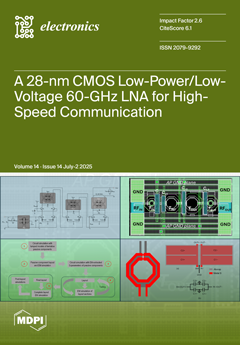Tiny Machine Learning (TinyML) extends edge AI capabilities to resource-constrained devices, offering a promising solution for real-time, low-power intelligence in smart cities. This review systematically analyzes 66 peer-reviewed studies from 2019 to 2024, covering applications across urban mobility, environmental monitoring, public safety, waste
[...] Read more.
Tiny Machine Learning (TinyML) extends edge AI capabilities to resource-constrained devices, offering a promising solution for real-time, low-power intelligence in smart cities. This review systematically analyzes 66 peer-reviewed studies from 2019 to 2024, covering applications across urban mobility, environmental monitoring, public safety, waste management, and infrastructure health. We examine hardware platforms and machine learning models, with particular attention to power-efficient deployment and data privacy. We review the approaches employed in published studies for deploying machine learning models on resource-constrained hardware, emphasizing the most commonly used communication technologies—while noting the limited uptake of low-power options such as Low Power Wide Area Networks (LPWANs). We also discuss hardware–software co-design strategies that enable sustainable operation. Furthermore, we evaluate the alignment of these deployments with the United Nations Sustainable Development Goals (SDGs), highlighting both their contributions and existing gaps in current practices. This review identifies recurring technical patterns, methodological challenges, and underexplored opportunities, particularly in the areas of hardware provisioning, usage of inherent privacy benefits in relevant applications, communication technologies, and dataset practices, offering a roadmap for future TinyML research and deployment in smart urban systems. Among the 66 studies examined, 29 focused on mobility and transportation, 17 on public safety, 10 on environmental sensing, 6 on waste management, and 4 on infrastructure monitoring. TinyML was deployed on constrained microcontrollers in 32 studies, while 36 used optimized models for resource-limited environments. Energy harvesting, primarily solar, was featured in 6 studies, and low-power communication networks were used in 5. Public datasets were used in 27 studies, custom datasets in 24, and the remainder relied on hybrid or simulated data. Only one study explicitly referenced SDGs, and 13 studies considered privacy in their system design.
Full article





